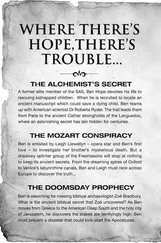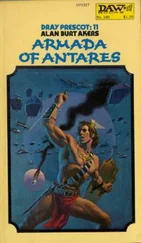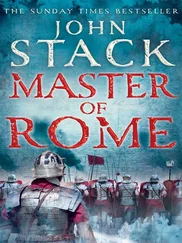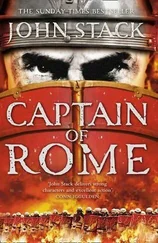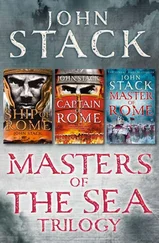From the moment of its conception, few in Spain doubted the enormity of the challenges facing any attempt to invade the shores of England. Many strategies were advanced by senior advisors and commanders but ultimately King Philip chose a plan that would require two forces, a naval Armada and the Duke of Parma’s Army of Flanders, to link up and bridge the English Channel. From the beginning Philip was deeply involved with every aspect of the campaign and communication between Santa Cruz in Lisbon and Parma in Holland was channelled through the King’s office, ensuring that Philip was privy to every decision.
The seafarers of the Spanish Empire were masters of their craft but the more experienced naval officers of the Armada knew the English navy would be difficult to defeat. The speed and nimbleness of the English ships was already renowned, as was their superior prowess in gunnery, and Spanish concerns were reinforced by the panic and delays caused by Drake’s attack on Cadiz in 1587.
Despite these reservations King Philip contended that the English would either have to engage in ship-to-ship combat or flee before the Armada. For a time it seemed his words were prophetic. Spanish military discipline was second to none and apart from one incident on the first day of battle, when ships of de Recalde’s wing retreated, the Armada remained in strict formation while under English guns, allowing it to sail the entire length of the English Channel without the loss of a single ship to enemy fire.
Faith also played a large part in the planning of the Armada enterprise and its power should not be underestimated. Philip was a devout Catholic and any shortcomings that were recognized were confidently excused in the knowledge that God would assist their every endeavour. This depth of faith was prevalent on both sides and is evident in much of the correspondence between commanders and their superiors.
Don Alonso Pérez de Guzmán (‘el Bueno’), Duke of Medina Sidonia, was one of the most senior nobles in Spain and his administrative skills made him an ideal choice to replace Santa Cruz who, though a highly experienced military commander, had few. Medina Sidonia was faced with a mammoth task when he arrived in Lisbon to take charge in February 1588. His reluctance to accept the post is well documented but his subsequent actions bear witness to his determination once his position was confirmed and he swiftly brought order to anarchy in Lisbon.
Many historians have directed a large portion of the blame for the Armada’s ultimate failure at Medina Sidonia, citing his limited naval combat experience and his lack of initiative. The duke however knew his limits and he continually sought and followed the guidance of his highly competent military advisors. The Armada might have fared better if Medina Sidonia had showed greater resourcefulness but it must be realized that at all times his options were limited by Philip’s inflexible orders. His courage was beyond doubt and the San Martín was at the heart of nearly every action in the campaign.
What proved to be one of the greatest weaknesses in the Spanish plan was the inability of Medina Sidonia and Parma to communicate effectively. At every stage in his advance Medina Sidonia dispatched updates to Parma to inform him of his progress. He never once received a reply or even an acknowledgement that his letters had been delivered. Crucially Medina Sidonia seemed to believe that Parma would sally out to meet him and they would rendezvous at sea, while Parma was firmly of the mind that any such sortie would result in annihilation of his transport fleet by the Dutch flyboats and so the Armada would have to come to him. The King’s command was simply that they ‘join hands’. No precise instructions had been given for how this would be achieved and with no deep water port in Spanish possession, the main purpose of the Armada remained shrouded in confusion until it reached Calais.
At the time of the Armada Lord High Admiral Charles Howard, Earl of Nottingham, was at the pinnacle of his long career. He was fifty-two years old and came from a distinguished line of naval officers. But despite his naval background he, like Medina Sidonia, had never experienced war at sea and relied heavily on his subordinates. Chief amongst those was Sir Francis Drake. A daring privateer, Drake’s raid on Cadiz in 1587 delayed the sailing of the Armada. He successfully predicted that the Spanish plan would involve a link up between Parma and the Armada and therefore advocated stationing the bulk of the English fleet at Plymouth, as far to windward of the narrow seas around Dover as possible. He contended that, ‘the advantage of time and place in all martial actions is half a victory,’ and his plan successfully ensured that the English fleet had the weather gauge when the Armada entered the Channel.
At the core of the English fleet were ‘race built’ galleons, a new breed of ship that saw accelerated development during the Tudor reign. Fast and nimble they carried a high proportion of armament in relation to their overall tonnage, upwards of ten per cent which was more than double that of their Spanish counterparts. Their heaviest guns were mounted in the bows and their method of attack was as described in the book. The galleon would swoop in from windward and fire in turn their bow chasers, lee broadside, stern chasers and second broadside before tacking away to reload. The English had high expectations of the damage these guns would inflict on the Spanish ships and were forced to rapidly alter their tactics after the first encounters proved they were not as effective at longer ranges.
The ‘race built’ galleons were warships designed for a primary purpose, to defend the coast of England, and so had little need of the massive holds of the Spanish galleons which were required for transoceanic trading. This gave them the option of carrying heavier guns closer to the water-line, a factor which had a significant impact in the Battle of Gravelines. The main weakness of these new English galleons was their scarcity and the vast majority of the remaining ships in the English fleet were of little value in heavy fighting.
The Retribution and Santa Clara are fictional galleons but both are based on typical ships of their class. The Retribution would have been one of the premier ships of the English fleet, while the Santa Clara would have been second to the larger galleons of the squadron of Portugal. The lead ships of the other Spanish squadrons, in the most part heavily armed merchantmen, and the Neapolitan galleasses, made up the rest of the ‘troubleshooting’ warships of the Armada.
There are a multitude of books written on the Spanish Armada, with many and various contradictory conclusions as to why the English triumphed over it. The source documents for more recent books are mostly contemporary, particularly on the Spanish side, where volumes exist on the meticulous preparations for the campaign. These, along with more recent findings, in particular the discovery and exploration of Spanish wrecks along the coastline of Ireland from the 1960s onwards, have led to many challenges to the assertions of earlier historians who laboured under misconceptions regarding the size of Spanish ships versus English, and the ordnance carried by both sides.
The Spanish had four times as many ships over 500 tons as the English, but the majority of these were armed merchantmen, while all the English ships of this size were galleon warships. The Spanish merchantmen in the main did not take part in the battle, but rather sailed in the centre of the Armada’s formation. Where ships of comparable size did clash, the Spanish galleons or merchantmen flagships were no match for their English counterparts.
Many of the ships in the Spanish Armada were heavily armed, with some carrying upwards of fifty guns. But most of these weapons were of smaller calibre and some of the largest guns listed on the manifest for the fleet were actually siege pieces that had been stowed below decks for the voyage to England. The latest research claims that the Spanish had 138 guns of 16 pound calibre or above while the English had 251 such pieces.
Читать дальше
Конец ознакомительного отрывка
Купить книгу


